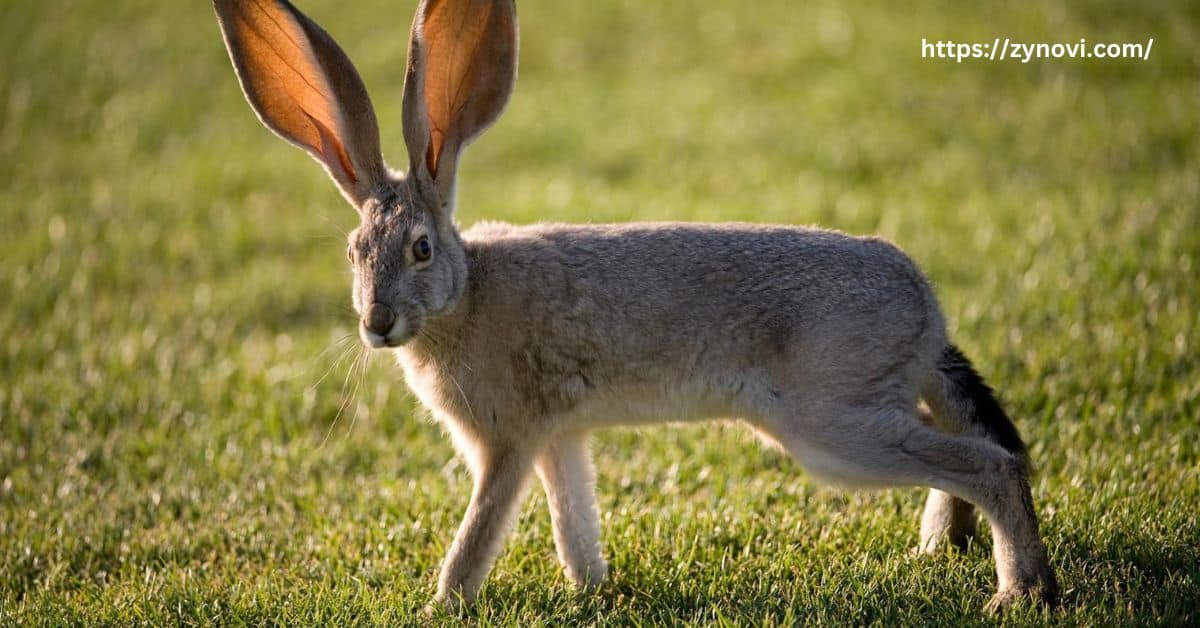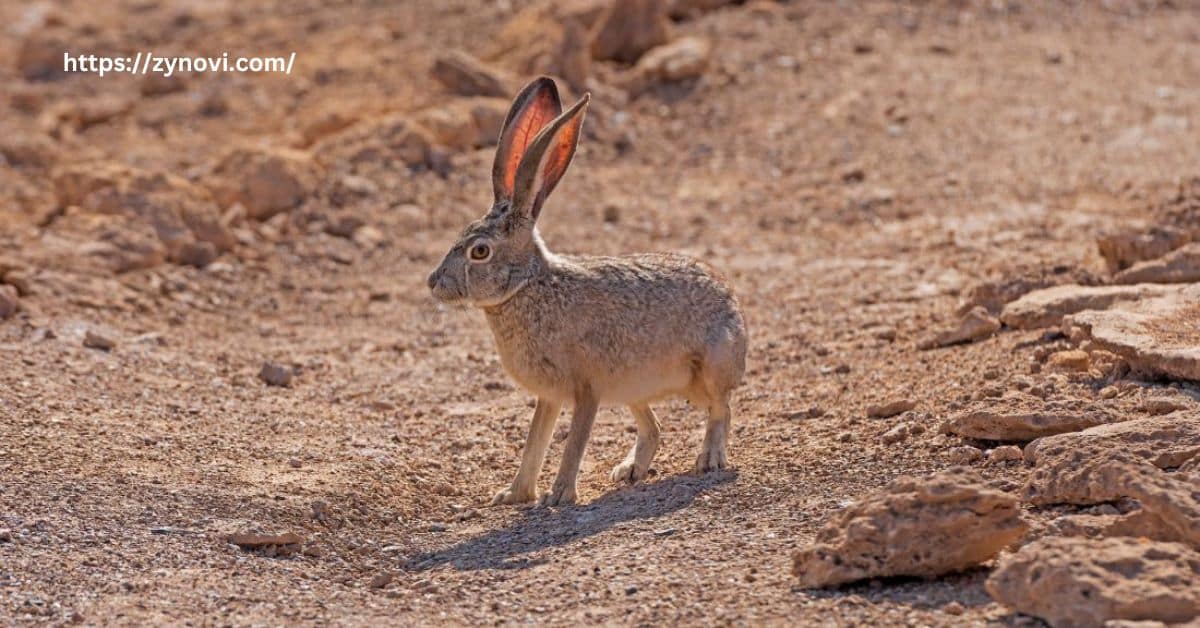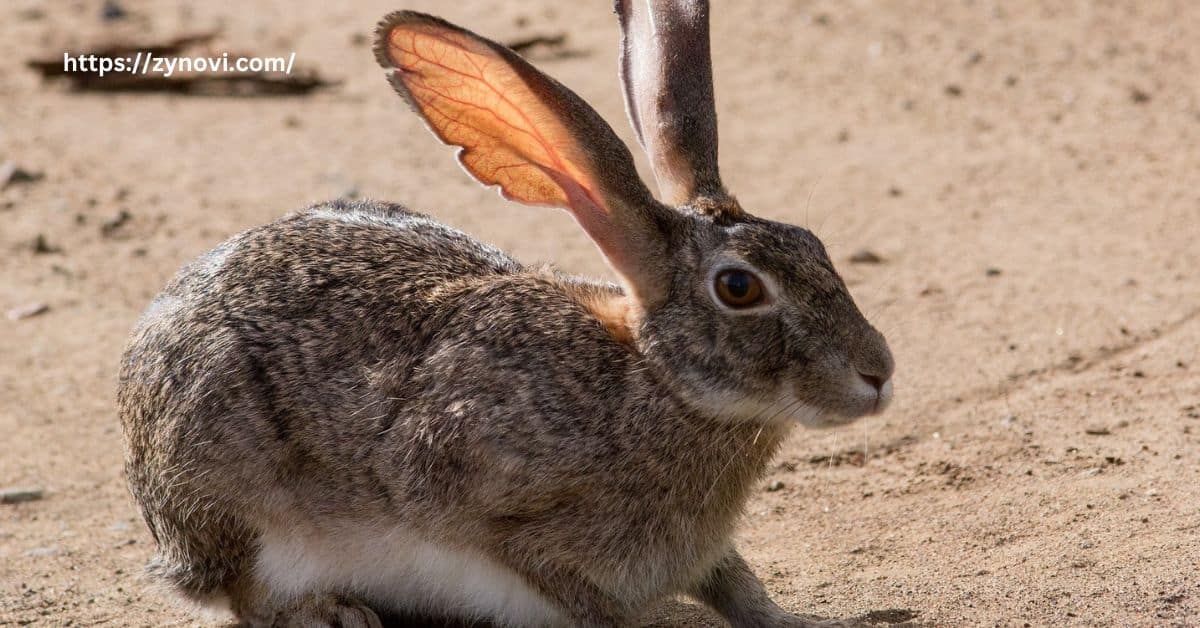Do jackrabbits attack humans? Jackrabbits do not typically attack humans; they are shy animals that prefer to flee rather than fight.
It’s a question that might sound surprising, but if you’ve ever come across one of these fast and elusive creatures, you might wonder what could happen if they felt threatened. Jackrabbits are known for their speed and agility, but are they really as harmless as they seem?
In this article, we’ll find the fascinating behavior of jackrabbits, explore how they interact with humans, and clarify whether they could pose any risk to you. So, if you’re curious about these wild animals and want to know how to safely handle an encounter, keep reading!
Understanding Behavior of Jackrabbits
What Are Jackrabbits?
Jackrabbits, members of the genus Lepus, are large hares commonly found in North America. Despite their name, they are not rabbits but hares, known for their long ears, powerful hind legs, and exceptional speed. Jackrabbits are fascinating creatures often misunderstood due to myths and misconceptions about their behavior.
These physical characteristics make them masters of survival in harsh environments.
Key Features of Jackrabbits:
| Feature | Details |
|---|---|
| Ears | Can grow up to 6 inches long; help regulate body temperature. |
| Hind Legs | Built for speed and leaping; can jump 20 feet in a single bound. |
| Fur for Camouflage | Typically gray or brown, blending with their surroundings. |
| Size | Adults weigh between 3-7 pounds and measure 18-24 inches in length. |
Where They Live
Jackrabbits are highly adaptable animals, capable of thriving in various environments, each suited to their physical and behavioral traits:
- Deserts, Grasslands, and Scrublands: These open and arid regions of the Western United States (such as Arizona, California, Nevada, and New Mexico) provide jackrabbits with ample space to forage and hide from predators. Their fur’s natural coloration helps them blend seamlessly with the dry, dusty landscapes.
- Suburban Areas: Jackrabbits are increasingly seen venturing into suburban neighborhoods, especially when natural habitats shrink due to urban expansion. These areas often offer gardens and lawns that inadvertently provide food sources like grasses and shrubs.
Nutritional Habits and Ecological Impact

Jackrabbits are herbivores, primarily consuming grasses, shrubs, and other vegetation. Their diet adapts seasonally based on availability, showcasing remarkable resilience in resource-scarce environments.
Herbivorous Diet Breakdown
Jackrabbits’ diet shifts with the seasons to ensure survival, showcasing their adaptability:
- Spring/Summer: During warmer months, jackrabbits feed on grasses, flowering plants, and young shoots, which are abundant and rich in nutrients to support their energy needs.
- Fall/Winter: In colder seasons, when vegetation is sparse, they rely on shrubs, bark, and seeds, which provide essential sustenance and help them endure harsher conditions.
Ecological Contributions
Jackrabbits play a vital role in maintaining the balance and health of their ecosystems through various functions:
- Seed Dispersal: By eating plants and spreading seeds through their droppings, jackrabbits contribute to plant regeneration and biodiversity, helping maintain healthy vegetation cycles.
- Prey Animal: Jackrabbits serve as a critical food source for predators such as coyotes, foxes, and birds of prey, supporting the predator-prey dynamic that sustains the food web.
- Maintaining Plant Balance: Their grazing activity helps prevent overgrowth of certain vegetation, ensuring that habitats remain open and accessible for other wildlife.
Do Jackrabbits Pose a Threat to Humans?
Do Jackrabbits Attack Humans? Despite their imposing speed and leaping abilities, jackrabbits are inherently timid animals with a strong fleeing instinct. They rely on their agility to escape threats rather than confront them.
Why Jackrabbits Rarely Show Aggression
Jackrabbits are inherently non-aggressive, displaying behaviors shaped by their status as prey animals:
- Shy Nature: Jackrabbits are naturally wary of humans and avoid interaction whenever possible. Their first response to perceived danger is to retreat, relying on their timid nature to minimize risk rather than confront threats.
- Wildlife Behavior: As prey animals, jackrabbits lack offensive tools such as sharp teeth or claws. Their behavior is defensive and focused on survival, making aggression toward humans extremely rare and usually tied to extreme circumstances like feeling cornered.
- Fleeing Instinct: Jackrabbits are equipped with powerful hind legs, enabling them to reach speeds of up to 40 mph and leap up to 20 feet. They rely on their impressive speed and agility to escape predators or threats, choosing flight over fight almost every time.
Do Jackrabbits Attack Humans?

The idea of jackrabbits attacking humans is largely a myth. Documented cases of jackrabbit aggression are extremely rare and usually stem from defensive behavior.
Rare Defensive Behavior
While jackrabbits are typically non-aggressive, certain situations can trigger defensive actions:
- Cornered/Trapped Response: When a jackrabbit feels cornered or unable to escape, it may resort to scratching or biting. These defensive actions are rare and only occur as a last resort to protect itself.
- Offspring Protection: A mother jackrabbit may show unusual aggression if she perceives a direct threat to her young. This behavior is instinctive and aimed at ensuring the survival of her offspring in life-threatening situations.
Unusual Causes of Aggression
Jackrabbits rarely display aggression, but specific circumstances can lead to defensive behaviors:
- Fear Response: When jackrabbits experience extreme stress or fear, they might act defensively, such as biting or scratching. This reaction is a fight-or-flight instinct, triggered when they feel trapped or cornered.
- Habitat Encroachment: If humans unknowingly disturb a jackrabbit’s nesting area or territory, it might perceive the intrusion as a threat. Such disturbances can provoke a rare, defensive reaction, particularly if the jackrabbit feels it has no safe escape route.
How to Manage Jackrabbit Encounter
Jackrabbit encounters are generally peaceful. However, it’s important to follow best practices to ensure safety for both humans and animals.
Guidelines for Safe Interaction
- Observe from a Distance: Admire jackrabbits from afar to avoid causing them stress or fear. Keeping a respectful distance ensures both your safety and the jackrabbit’s comfort.
- Avoid Sudden Movements: Quick or abrupt actions can startle jackrabbits, triggering their flight response or, in rare cases, a defensive reaction. Move calmly and predictably when in their vicinity.
- Do Not Feed Wildlife: Feeding jackrabbits disrupts their natural dietary habits and may encourage unhealthy dependence on human-provided food. This practice can also lead to nutritional imbalances or increase risks of disease transmission.
If a Defensive Reaction Occurs
- Stay Calm: If a jackrabbit shows defensive behavior, remain calm and avoid making loud noises or abrupt movements. Panicking or escalating the situation could provoke the rabbit further.
- Back Away Slowly: Gently back away from the jackrabbit, providing it enough space to safely retreat. This gives the rabbit the opportunity to flee, which is its natural response in such situations.
- Avoid Handling: Never attempt to handle a wild jackrabbit, as they can carry diseases like tularemia. Close contact increases the risk of injury and disease transmission, both to you and the animal.
Possible Dangers and Health Risks

While jackrabbits pose minimal physical danger, there are a few health risks associated with contact.
Tularemia (“Rabbit Fever”)
- Bacterial Disease: Tularemia is caused by the bacterium Francisella tularensis, which can be transmitted through contact with infected animals, particularly wild rabbits and jackrabbits.
- Symptoms in Humans: If infected, humans may experience fever, skin ulcers, and swollen lymph nodes. In some cases, more severe symptoms can develop, including pneumonia or organ failure.
- Prevention: To reduce the risk of contracting tularemia, avoid touching wild animals, especially jackrabbits. Always wash your hands thoroughly if you come into contact with any animal, their droppings, or their bodily fluids.
Physical Injuries
- Bites and Scratches: While rare, jackrabbits may bite or scratch in self-defense, particularly when they feel threatened or cornered. These injuries are typically not severe, but they can still cause discomfort.
- Infection Risk: If bitten or scratched, it’s crucial to clean the wound immediately to prevent infection. If the injury shows signs of infection or if you’re uncertain about the severity, seek medical advice promptly to ensure proper care.
Final Verdict
Jackrabbits are timid, non-aggressive creatures that prefer flight over fight. Encounters with humans are usually uneventful, and attacks are exceedingly rare. These animals play a vital role in ecosystems, supporting biodiversity and maintaining balance.
- Jackrabbits are not dangerous but should be observed with respect for their space and habitat.
- Maintain a safe distance and avoid interaction to minimize risks.
- They are more valuable as a part of nature’s intricate web than as potential threats to humans.
FAQs
Are jackrabbits aggressive?
Jackrabbits are generally not aggressive and prefer to flee when threatened rather than fight.
Do jackrabbits bite humans?
Though rare, jackrabbits may bite in self-defense if they feel cornered or threatened.
Would a rabbit attack a human?
It’s highly unlikely; rabbits, including jackrabbits, are prey animals and typically avoid confrontation.
Do jackrabbits have sharp teeth?
Jackrabbits have strong, sharp teeth for chewing vegetation, but they do not use them offensively against humans.
Conclusion: Do Jackrabbits Attack Humans?
In summary, the answer is no jackrabbits do not attack humans under normal circumstances. These shy animals embody nature’s grace and agility, serving an essential ecological purpose. By understanding their behavior and respecting their habitat, we can coexist harmoniously with these remarkable creatures.
“Observing wildlife is not about interaction; it’s about appreciation and respect.”
Embrace the opportunity to learn about jackrabbits and their world, but always prioritize safety and conservation.










